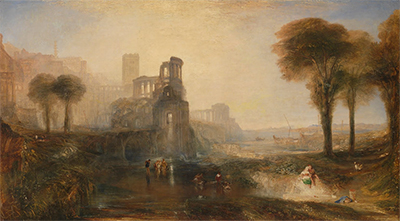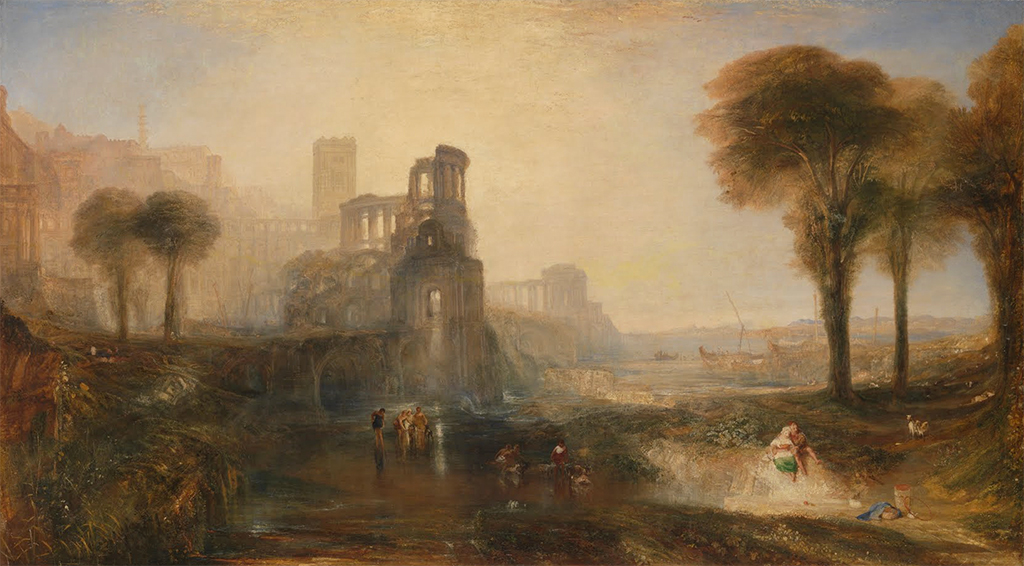This classically-inspired painting from JMW Turner arrived in 1833 and features a combination of landscape, seacape and cityscape in one complex piece.
The artist has depicted much of the content in this work as damaged and unrepaired, suggesting a civilisation that has fallen upon hard times. He would often take this angle within his work, excited by the contrast of success and failure, which could be seen visually with this type of approach. The same can be said for his scenes of disaster, where grand vessels and their crew could be swept under, with no hope of being saved. This drama would suit his own romanticist style, a movement which also gave us the likes of Gericault, Delacroix and Constable. This particular painting is now displayed at the Tate Britain, as part of a huge collection of his work which predominantly derives from the artist's own death, at which point his paintings were bequethed to the state.
We find here a detailed town, with architecture falling into disrepair. Whilst much still seems active and buoyant, the curved structure nearest to us is almost entirely destroyed. It serves only the purpose of allowing light through its walkways and windows, which drifts across the river below. Several figures play within the water and a number more are sat on the bank besides. The foreground is dominated by tones of green and brown, due to the grassy banks which angle into the composition from the sides. The sky above is bright, with relatively little work done on the clouds which are most of a single mass rather than a network of individual elements. Two trees sit on the further left hand side, placed directly in front of the elements of the city that still remain in good order.
Turner would find inspiration from two main areas, firstly the natural world, and secondly literature. As a poet himself, we would often produce scenes from his imagination, based on something recently read. He would also write passages to sit alongside his paintings from time to time. Most of the items from his imagination would then be constructed on the canvas from real items that he had come across on his travels, though the architecture would need to be adapted to the period of the specific literature. It is worth comparing this painting to some from the career of Thomas Cole, a member of the later Hudson River School, who gave us the likes of The Oxbow, The Titan's Goblet and The Architect's Dream.





